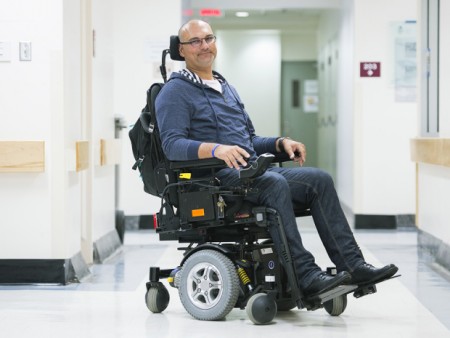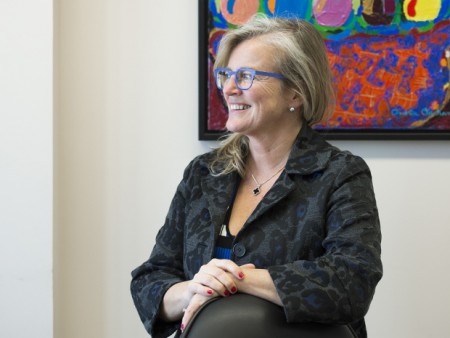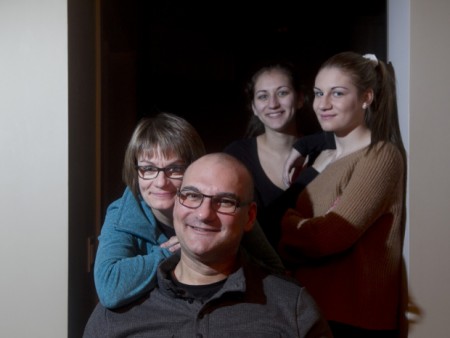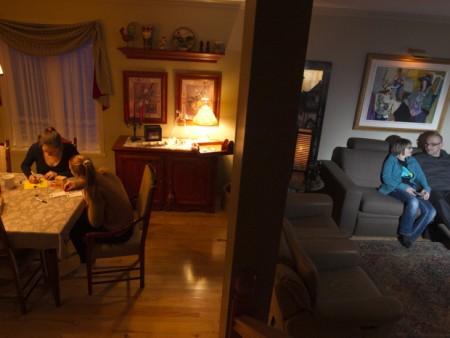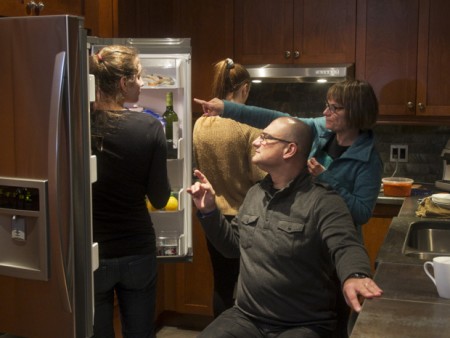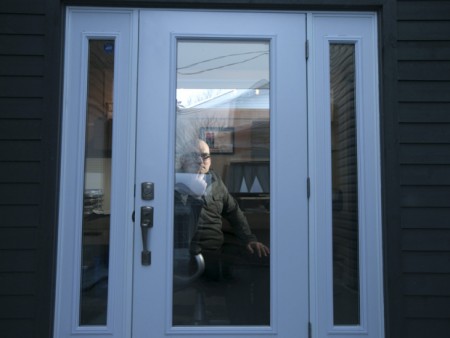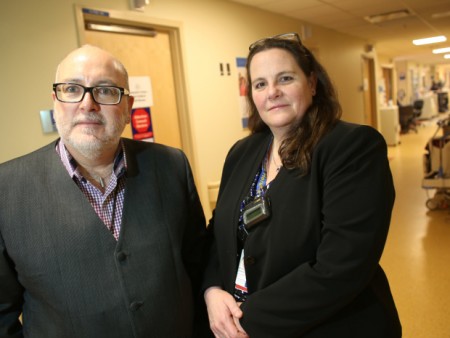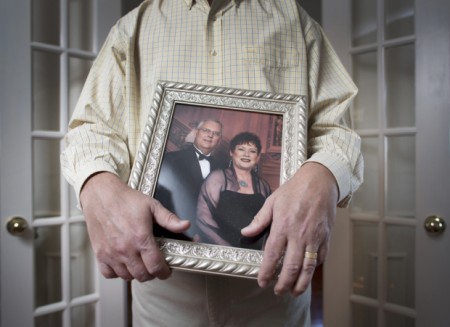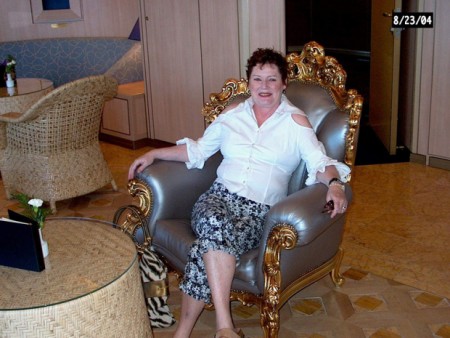When a patient’s death is inevitable, there are three important things a doctor can do.
The concept of a “good death” might seem like an oxymoron—how could anything about dying be good?—but you only need to watch someone die badly to recognize that dying well is not only a valid goal but also a surprisingly hard one to achieve.
Advances in medical technology have made it possible to treat conditions that even a decade ago would have been considered hopeless. While this is a wonderful thing, the seemingly miraculous power of technology has also encouraged the attitude that it should always be used. As a result, far too often patients or their families indulge the nearly irresistible urge to “Do something!” when faced with an insoluble life-threatening medical problem, even when that something is far more likely to prolongthe dying process than halt it. In this way patients themselves have become complicit in reducing their likelihood of experiencing a good death.
It’s easy to understand why. It’s hard not to try something when there’s something to try, especially when facing one’s imminent demise. But resisting the temptation to pursue futile interventions can be done—as a patient of mine named Michael recently showed me.
When Michael first came to see me in my clinic in April of 2010, however, I had no inkling that he’d show me anything. His tall, athletic frame struck me as more than merely a symbol of his good health—it struck me as evidence against the diagnosis about which he’d come seeking a second opinion, a diagnosis of a disease he desperately wanted me to tell him he didn’t have: amyotrophic lateral sclerosis, or ALS. Yes, he had fasciculations (uncontrollable jerky movements) of his tongue and dysarthria (difficult-to-understand speech). But ALS patients with end-stage symptoms like these weren’t usually able to stride across my exam room and shake my hand with anything close to the kind of power I felt in Michael’s grip.
Only five months later, however, he developed neck weakness and some clumsiness in his left hand. When he next developed weakness in the muscles of his diaphragm, we all became convinced that ALS was indeed what he had. (There is no definitive test for ALS; the diagnosis can only be made from the appearance of its symptoms.) At first, he was angry, a natural response given that the median survival of ALS patients from the time of diagnosis is only three to five years. But soon that anger seemed to fade into acceptance.
At that point he elected to have a feeding tube placed, as his ability to swallow had diminished. Soon after that it became clear that his ability to breathe was also deteriorating. Given that his limb strength remained nearly normal—and with it his ability to function—he elected to have a tracheostomy (a permanent hole surgically placed in his throat) so that he could be on a ventilator at home during the night while he slept. During the day, he was able to breathe without assistance and continued to enjoy what he considered to be a fairly good quality of life. He remained able to drive, and even put on 20 pounds.
When I saw him again in August of 2011, however, his speech had deteriorated further, and he reported having trouble with activities that required fine motor movements, such as writing. When I saw him six months after that, he reported that the muscles of his forearms had shrunk, and I noticed that his grip strength had significantly decreased. He’d begun by then to use the ventilator occasionally during the day.
After September of 2012 he became too weak to be transported to my office, so his partner Al and I began corresponding by text messages and phone calls, managing each subsequent complication (tracheostomy pain, leg spasms, anxiety) together as best we could. Then in November of 2014 Al called to tell me that Michael had become “dead weight” and could no longer move by himself at all. He was now on the ventilator 24 hours a day and requiring more care than Al could provide even with the help of his family. He asked me about placing Michael in a nursing home. I told Al I thought this was a good idea, but that Michael would need to be admitted to the hospital and stay a required three nights before Medicare would pay to have him transferred to a facility able to care for him.
Michael, Al, and I had talked about end-of-life care during Michael’s second clinic visit. As we all recognized Michael was now nearing the end of his life, it was time to return to those discussions, so I went to visit Michael in the intensive care unit the day after he was admitted. I was shocked by what I saw. He was cadaverously thin, his face frozen in an expression of horror, his mouth hanging open in what looked like a scream. But he wasn’t in pain, he told me by spelling out one letter at a time on a piece of cardboard. He simply could no longer create a facial expression other than with his eyes.
Al had told me the night before that Michael wanted to continue living as long as he felt he was “able create value for others.” I asked Michael if that was true. He said it was. But when I asked him if he felt he was still able to do that, he shook his head no (he could still do this well enough to make his meaning plain). Then, painstakingly, he spelled out, “I’m ready for the next step in my journey.” When I asked him if that meant he was ready to die, he nodded yes. I asked him if Al knew he felt that way. He shook his head. When I asked him if he wanted me to tell Al, he nodded again.
After a small pause, I asked him if he was afraid to die. He shook his head. Then I asked him if he was afraid he would suffer. He shook his head again. I nodded and reminded him of the promise I’d made him the first day we all realized he did, in fact, have ALS. “I won’t let you suffer,” I’d said. “No matter what.”
I told him that there were two ways we could allow him to die. We could stop his tube feedings. Without water, I told him, he would die within seven to 10 days. Or we could disconnect his ventilator, which would likely cause his death within a matter of hours. In either case, I emphasized, we would keep him comfortable the entire time.
He said then that he wanted me to disconnect the ventilator. I asked him who he wanted to have present. He wrote that he didn’t want his family there. He wanted Al and me there and a few of his friends. We decided that he would spend the next day saying goodbye to people and that the day after that we would follow his wishes.
So I scheduled him to die on Friday at 10 a.m.
It seemed more than a little bizarre to arrange someone’s death the way I’d arrange a clinic appointment. I found myself wondering just how a person became capable of deciding to die when he wanted so badly to live. Documentaries like Dignitas andHow to Die in Oregon have shown us people with terminal illnesses in physical pain so severe that their desire to live is simply and mercifully snuffed out. And though I could readily believe that profound disability like Michael’s had the same ability to remove the fear of death, I couldn’t actually imagine it. My own love of life is too strong, my fear of death too overpowering, to be able to envision calmly scheduling my own death within a matter of days after deciding life was no longer worth living.
The unfortunate truth, however, is the likelihood that I, or anyone else, will one day have to make a decision like Michael’s has never been greater. Medicine’s greatest victory has paradoxically made it far more likely that we’ll also suffer at the hands of its greatest failure: As we’ve gotten better at preventing the most common cause of death in America—heart disease—we’ve increased our exposure to the risk of death from other diseases that kill far less quickly and that arguably end up causing far more suffering. The older we get, the more likely we are to become ill with cancer, dementia, stroke, and other diseases that preferentially afflict the elderly.
True, we’ve also become better at treating these diseases. And even when we can’t cure them, we can help people live longer with them. But is this necessarily a good thing? Certainly, longer life in general is. But what quality of life are the elderly now able to anticipate? The truth is that we’re far more likely to face a fate like Michael’s—meaning extreme disability near the end of our lives—than we’ve ever been at any time in human history.
I have little doubt that what mattered most to Michael near his end is what will matter most to us all near ours: not just that we remain as free from suffering as possible, but also, and perhaps more importantly, that we maintain our autonomy—the ability to continue to make choices that determine what happens to us.
Autonomy isn’t just about freedom. It’s also about being in control. Or, more accurately, the feeling of being in control. It’s the feeling, not the fact, that has the power to make us feel better—that has the power to make us feel as if an unbearably awful situation isn’t quite as awful as it seems. Feeling in control of even one small aspect of an awful situation, in fact, is often the antidote to the suffering such situations create. It’s well-documented that patients given barbiturate prescriptions to end their lives often don’t use them, but are much relieved at being given the power to choose.
Which is why I told Michael that though I couldn’t prevent him from dying, I could give him the power to choose how and when his death would occur. (Though physician-assisted suicide remains illegal in most states, withdrawal of care is permitted in terminal cases if death will occur as a result of the underlying disease process and not as a result of direct physician intervention.) And in the thanks he expressed—painstakingly, over 20 minutes on his cardboard tablet—about being given back that control, I found the reason my interactions with dying patients have been among the most gratifying of my career. For when a patient’s death becomes impossible to prevent, I’ve never believed that there’s nothing I can do. On the contrary, I find I’m needed to offer what are arguably the three most important things a doctor can: a willingness to discuss the subject of mortality, guidance regarding end-of-life care, and a promise to do everything I can to limit suffering and preserve patient autonomy.
So at 10 a.m. that Friday, I showed up in the intensive care unit to guide Michael, Al, and their close friends through the process of allowing Michael to make the choice to die. I explained that we would turn off the monitors that showed the progress of his vital signs, start an intravenous drip of morphine, and, finally, when he was comfortable, disconnect the ventilator. And after we did these things—as his fellowSGI-USA Nichiren Buddhist friends chanted their mantra Nam-myoho-renge-kyo in the background and his eyelids started to droop under the influence of the morphine—I bent down and whispered to Michael that I understood how much he cared about the value he’d created with his life, and that I would do my best to make certain that his death would create value too. I would tell his story to others, I whispered to him, the story of a man who faced a devastating illness with humor, grace, and dignity, a man who became, it seemed to me, even kinder as he grew sicker, and who wrested control away from his disease at least partially by courageously deciding himself when and how he would “take the next step in his journey.” He’d achieved victory, I told him, in the only way any of us can: by refusing to be defeated in his heart by a disease he couldn’t defeat.







